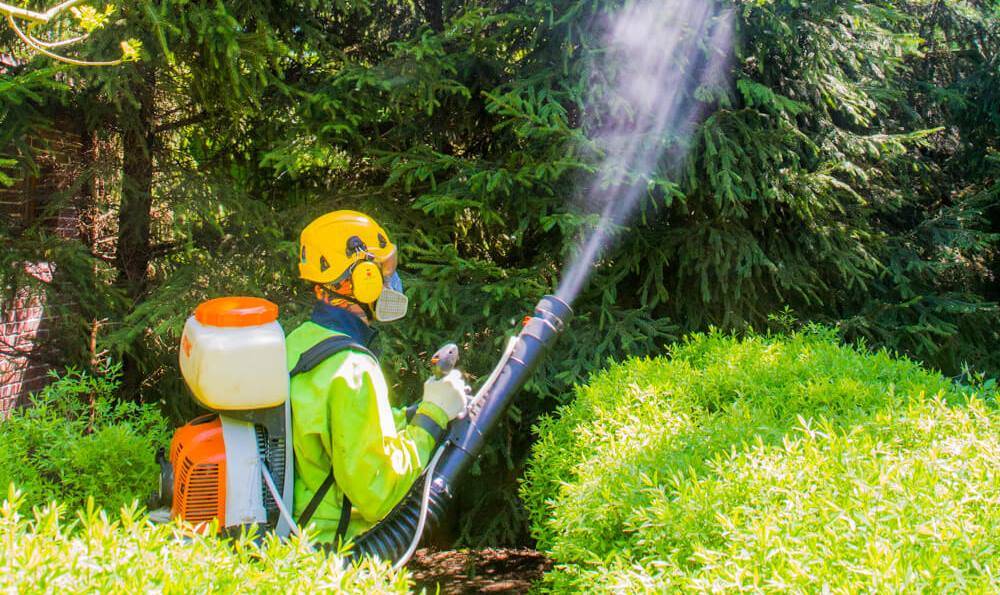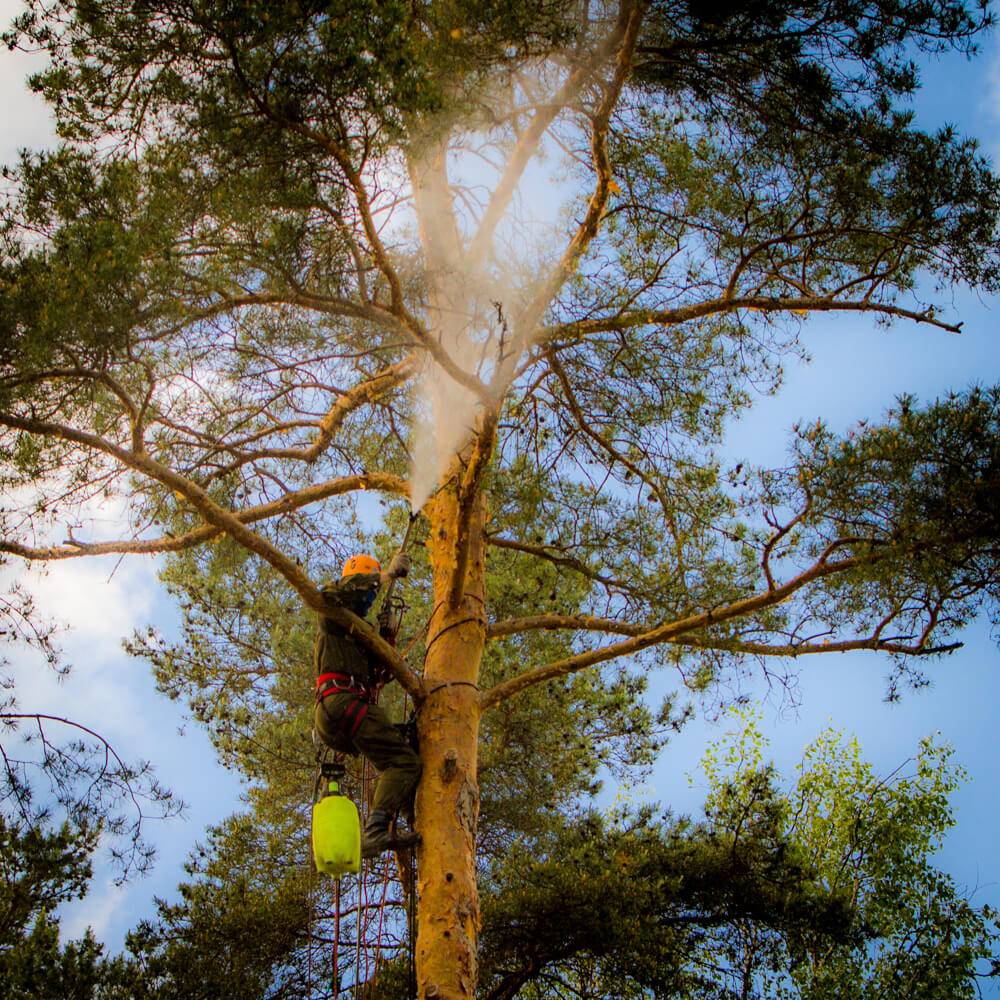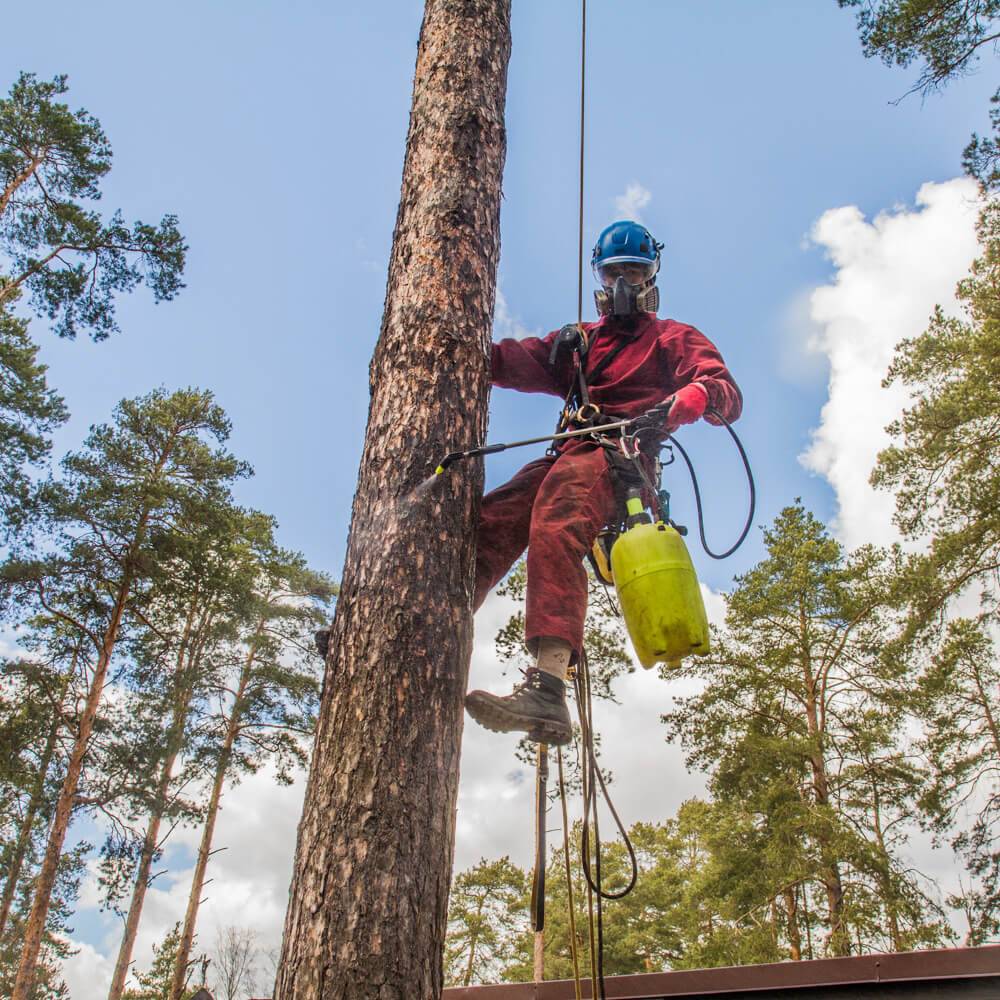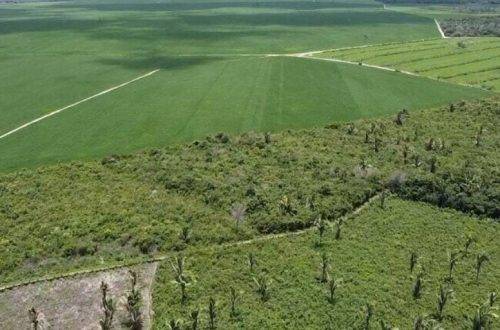
Bark Beetle CONTROL: MEANS AND METHODS FOR SITE PROTECTION
The bark beetle, 4-8 mm in size, is one of the most dangerous forest pests. The main food base for the bark beetle is spruce, pine, birch, less often fir, cedar and larch. The bark beetle feeds on the bast tissue of the tree – this is the inner layer of the bark, along which nutrients move from the roots to the crown of the tree. When the bast is eaten around the circumference, the nutrition of the tree stops completely and the tree dies.
The bark of the tree is also used by adults for breeding. The functional purpose of the bark beetle in nature is the sanitary cleaning of the forest from diseased and weakened trees. However, in conditions of uncontrolled increase in the number of the bark beetle population, healthy spruce and pine trees also fall under the risk of “settlement”. Therefore, it is important not only to carry out the prevention of tree diseases in a timely manner, but also to clean up the territory from deadwood and diseased plantations – potential breeding and wintering grounds for the bark beetle.

The most dangerous representatives of the species are: bark beetle-typographer, pine beetle, Siberian engraver, fluffy polygraph, birch beetle, large pine borer, spruce sawfly, pine sawfly, pine hawk moth, coniferous moth, spruce and pine leafworms.
LIFE CYCLE
At the end of September – October, when the air temperature drops to +5 degrees, the bark beetle hibernates in a place previously chosen for this, which allows it not to freeze throughout the winter. Roots and bark of trees, deadwood and dead wood, forest litter are well suited for this. With the onset of spring, as soon as the sun warms up the wintering place, the surviving beetles come out of hibernation and begin to search for a new tree for reproduction. An adult is able to tolerate frosts down to -30 degrees, larvae and pupae die at -13 and -17 degrees, respectively. Therefore, a particularly active flight of the bark beetle in April-May occurs after mild winters.
“It is recommended to carry out the primary processing of trees no later than April 20 to prevent the colonization of the bark beetle”
For breeding offspring, the bark beetle chooses a weakened tree with a thick bark, in the absence of such, it picks up any healthy, young tree, or even a stump. Also, the choice of a bark beetle may fall on a healthy tree or shoot, if all available trees suitable for reproduction are already occupied by its relatives. Having looked for a suitable place, the bark beetle gnaws a hole in the bark 2-3 mm in size, then attracts several females with a specific pheromone to breed offspring, and after some time leaves the tree to search for the next one. After 60-70 days from the moment of settlement, a new generation of bark beetle grows up and begins its own adult life, and already from the beginning of July the second, summer flight of the bark beetle starts. Each adult individual can produce from 2 to 4 offspring per season, each of which completely destroys a coniferous tree.
PREVENTION OF INFECTION OF TREES
- Installation of pheromone traps along the boundaries of the site. This will make it possible to detect the presence of the bark beetle at an early stage and take preventive measures to combat it: treating spruces and pines with insecticides, monitoring and timely removal of infected trees. This is only a preventive measure and does not guarantee that the trees will not be infected.
- Treatment of healthy trees from the bark beetle during the flight of the bark beetle. The bark beetle is not active all year round. In the spring, at the end of April, the bark beetle wakes up from hibernation and flies to live trees to breed. In June, the second generation of the bark beetle hatches and more and more trees become infected.
- There can be up to four such flights during the summer! At the end of September, the bark beetle reduces activity and looks for places to winter.
Removal of infected and dry trees and destruction of infected cutting residues. The bark beetle can live in dead and fallen trees for a long time. And under favorable conditions, it can fly out and populate healthy trees on the site. - Timely sanitary pruning of trees. Pruning dry branches on spruce and pine trees significantly increase the resistance of a tree infected with diseases, rot and parasites, which increases the tree’s immunity.
Stimulation of the crown and root system of the tree. Feeding trees and treating trees from parasites and diseases, as well as stimulating growth, also increase the resistance of spruces and pines to bark beetles.
If the tree is already inhabited, then it will not be possible to save it, and in order to save the rest of the trees on the site, it must be removed as soon as possible, and the logging residues removed or burned!
SIGNS OF TREE INFECTION
- Drying of needles on spruces and pines. Usually the tree begins to weaken, the needles become sparser and begin to turn yellow, acquiring a red or bright yellow color. First, individual branches dry out, then the whole tree.
- Active shedding of needles. If the needles began to actively crumble from a spruce or pine, then this is a sure sign of a tree disease or infection with a bark beetle. Such trees should be given close attention.
- The appearance of woodpeckers and other birds feeding on tree parasites. This is also a sure sign of tree infection in the area.
- The appearance of sawdust and “drilling” (brown) flour at the roots of a tree. The bark beetle eats through the passages and takes out the wood. Such trees can no longer be saved, they must be removed as soon as possible.
- Holes 3-5 mm in size appeared in the cortex. Usually the bark beetle populates from a height of 6-8 meters and the holes are not visible from the ground! When holes begin to appear below, this is a sure sign that the tree is about to die.
- Strong release of resin in pines and fir trees. This is a sign of the tree’s struggle with pests and diseases, a protective reaction to external factors.
- Falling off the bark of a tree. This is the last stage of the tree’s life, when the sap flow has stopped, and the bark beetle has eaten all the bast tissue. The tree is already dead, and the bark beetle is ready for a new flight. Such trees must be removed immediately, even if they still have green needles.
WAYS TO PROTECT AGAINST Bark Beetle
To date, there are three main methods of dealing with bark beetle:
Spraying trees with barrier insecticides and stimulant preparations along the entire height of the trunk by arborists climbing the tree. This method has proven itself in the best way and gives almost 100% protection against bark beetle throughout the season. Processing is carried out immediately before the flight of the bark beetle: in mid-April, early June and July, with a very hot summer in August. Three or four treatments are enough to protect the trees on the site for the entire season. Processing is carried out with a mixture of preparations – a means of protection against pests and insects and a means for the destruction of fungi, bacteria and viruses. Insecticides are safe for humans and animals!

Treatment of the site with insecticides from the ground to a height of 8-10 meters. This method is suitable for treating a large number of low trees from the ground with a gas sprayer. The specialist treats each tree from root to crown with insecticides and stimulants. The maximum processing height of 10 meters in calm weather and is not suitable for tall trees.




